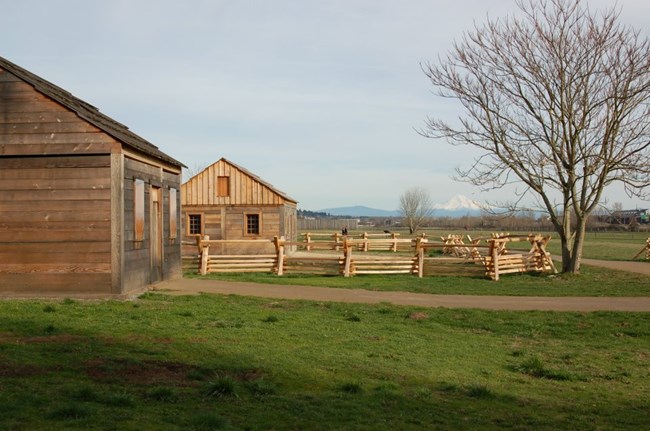
NPS photo
Fort Vancouver was the administrative headquarters and main supply depot for the Hudson's Bay Company fur trading operations in the early-to-mid 1800's. Under the leadership of John McLoughlin, the fort became the center of political, cultural, and commercial activities in the Pacific Northwest. Initially established as a National Monument in 1948, Fort Vancouver's boundaries were enlarged, and it was re-designated as a National Historic Site in 1961.
Fort Vancouver National Historic Site sits on the bank of the Columbia River, in view of the Cascade Mountains. The Site currently encompasses 210 acres in a variety of habitats and conditions. The natural environment was heavily impacted over time by the Hudson's Bay Company and by US Army development, which moved into the area in 1849. As a result, almost none of the Site's historic natural environment remains. Today the Site comprises primarily maintained historic landscapes with ornamental plantings and orchards, developed land (airport and railroads), and to a lesser extent, disturbed uplands and riparian areas.
The North Coast and Cascades Network provides natural resource inventory and monitoring information to help parks make effective, science-based management decisions. Inventories have been completed for birds, fish, mammals, reptiles & amphibians, and vascular plants (see species lists further down the page). Maps and reports detailing Fort Vancouver National Historic Site's vegetation, soils, and geologic resources are also complete.
For more information about Fort Vancouver National Historic Site, visit the Fort Vancouver website.
Monitored Here
ClimatePublications
Inventory Reports
Source: NPS DataStore Collection 531 (results presented are a subset). To search for additional information, visit the NPS DataStore.
Monitoring Protocols
Source: NPS DataStore Collection 7780 (results presented are a subset). To search for additional information, visit the NPS DataStore.
Select a Park:
Select a Species Category (optional):
Visit NPSpecies for more comprehensive information and advanced search capability. Have a suggestion or comment on this list? Let us know.
Last updated: March 1, 2023
